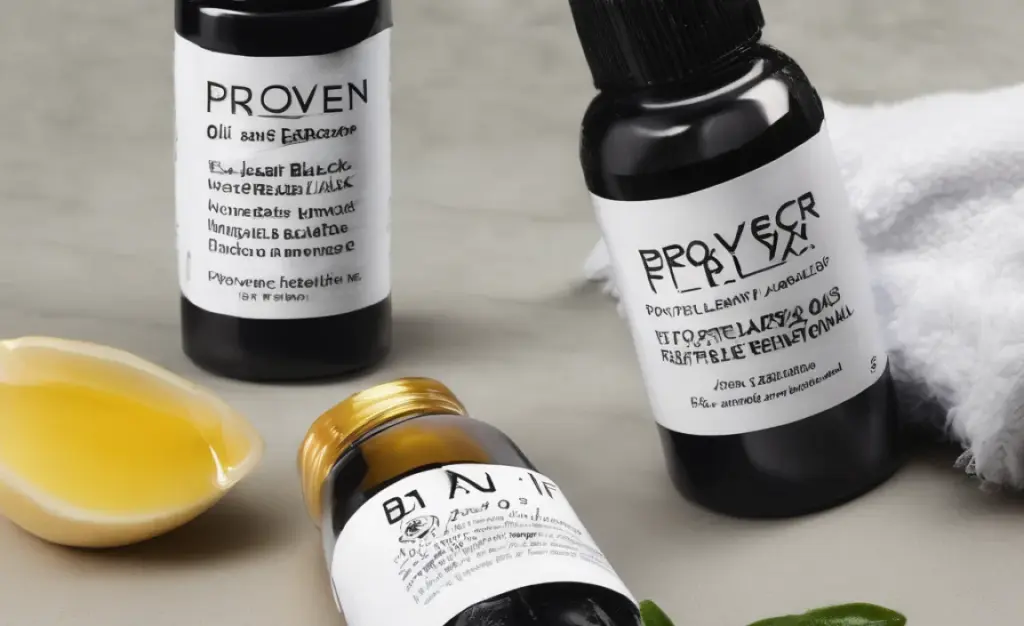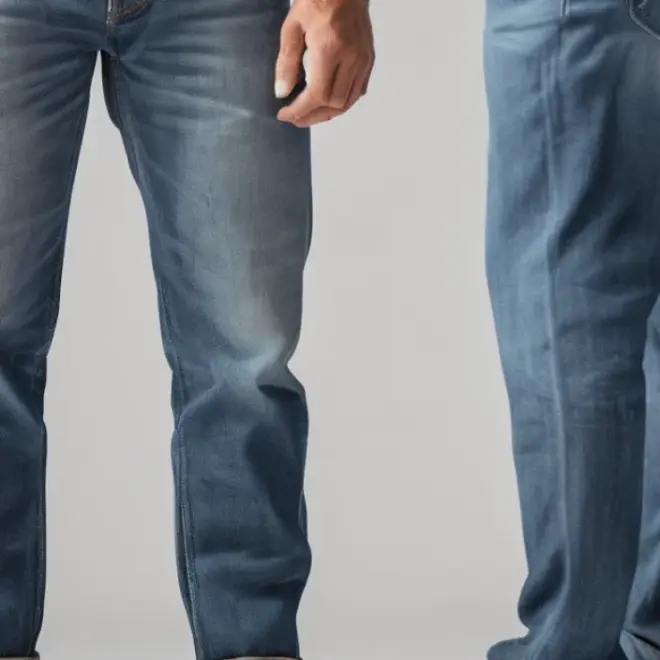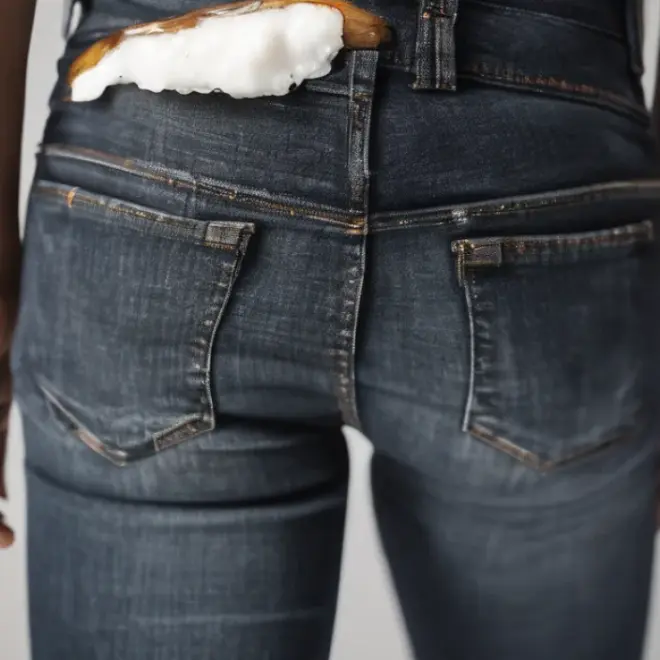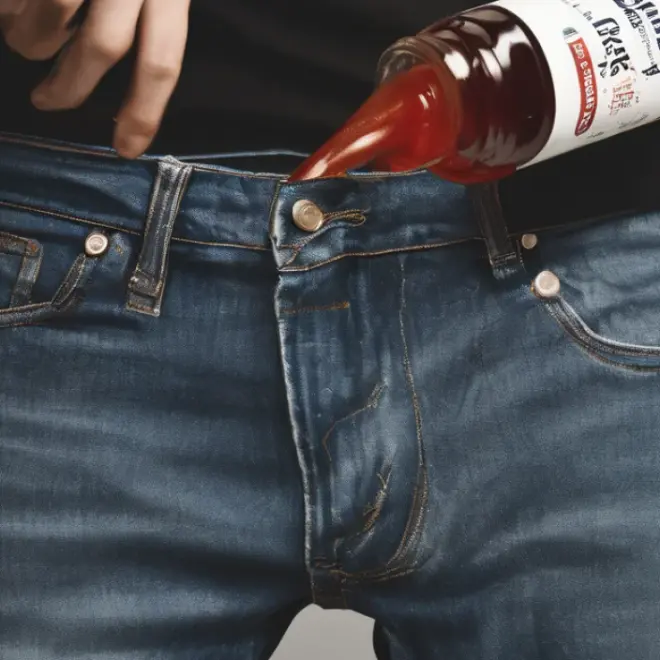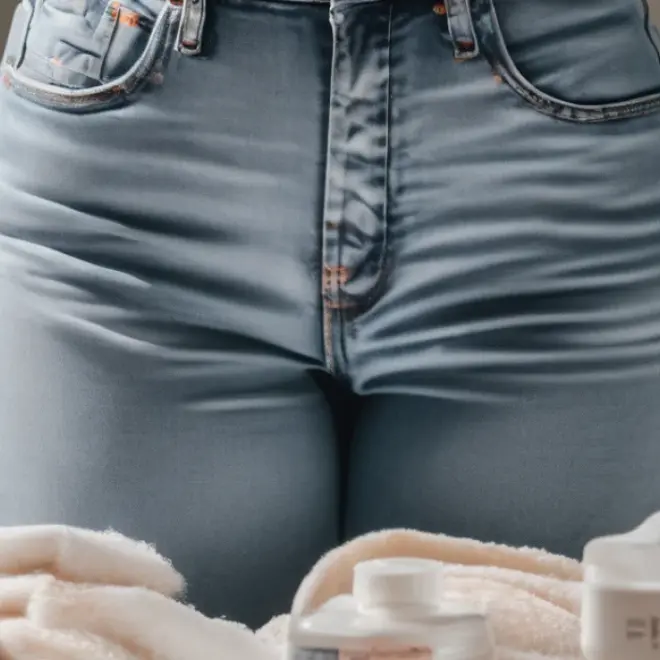Quick Summary:
Effortlessly remove oil stains from black jeans using simple household items and a gentle method. This guide offers proven techniques to restore your favorite denim without harsh chemicals, ensuring your black jeans look as good as new.
Proven Black Jean Oil Removal: Effortless Fix
Oil stains on black jeans can feel like a style emergency. Whether it’s a drip of salad dressing or a smudge from bike grease, the dark fabric makes those unwelcome marks stand out. Don’t fret! You can tackle these pesky spots with common household ingredients and a straightforward approach. This guide will walk you through straightforward, effective methods to rescue your black jeans, keeping them looking fresh and stain-free. You’ll learn simple steps that work, so you can get back to enjoying your favorite denim in no time.
Understanding Oil Stains on Black Denim
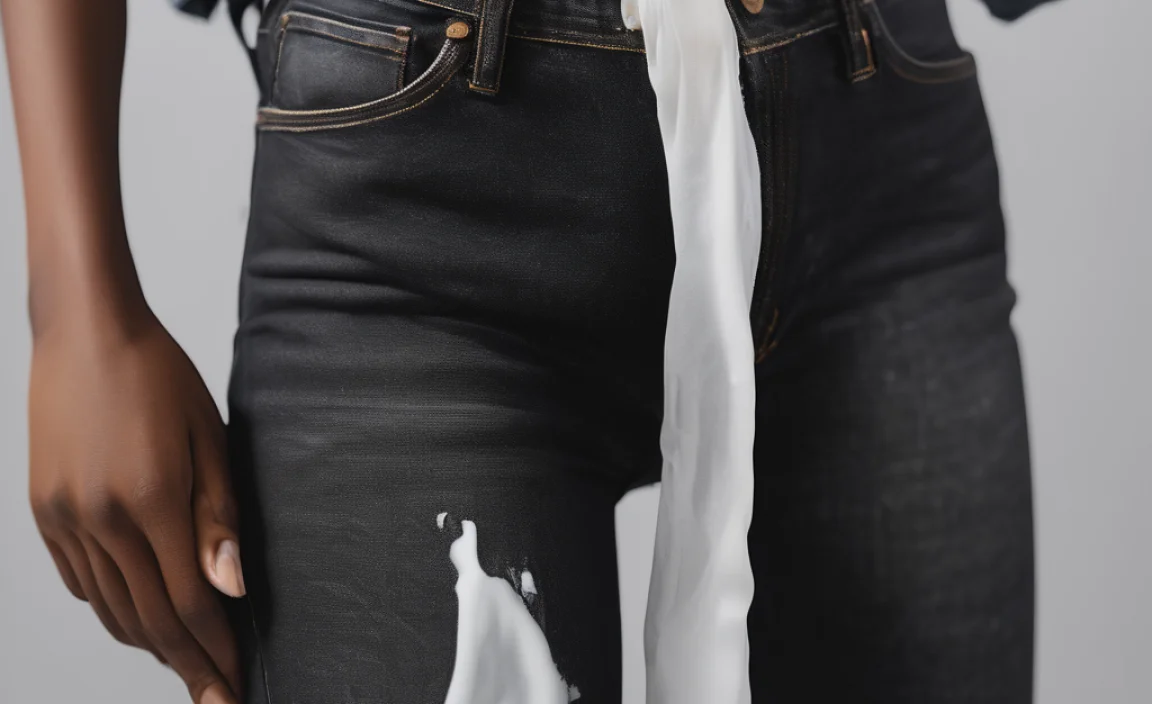
Black jeans are a wardrobe staple, offering versatility and a sleek look. However, their dark color can also make oil stains particularly noticeable. Oil and grease are hydrophobic, meaning they don’t easily mix with water, which is why they can be tricky to remove. When oil hits denim, it penetrates the fibers, creating a darker, often shiny, patch. The key to successful removal is to act quickly and use the right absorbent and cleaning agents.
The Science Behind Oil Removal

At its core, removing oil stains involves two primary principles: absorption and emulsification. Absorption is about drawing the oil out of the fabric fibers. Emulsification involves breaking down the oil into smaller particles that can then be washed away with water. Different household products excel at one or both of these tasks, making them ideal for tackling oil on your black jeans.
What You’ll Need: Your Oil Stain Fighting Arsenal

Before you start, gather these simple items. Having them ready ensures a smooth and efficient stain removal process.
- Absorbent powder: Cornstarch, baking soda, or talcum powder are excellent choices.
- Dish soap: A grease-cutting dish soap is your best friend here.
- Soft brush or old toothbrush
- Clean cloths or paper towels
- Cold water
- Optional: Laundry detergent, stain remover spray
Step-by-Step Guide: Tackling Fresh Oil Stains

Fresh oil stains are considerably easier to remove than set-in ones. Time is of the essence, so let’s get to it!
- Blot, Don’t Rub: As soon as you notice the stain, gently blot up as much excess oil as possible with a clean cloth or paper towel. Avoid rubbing, as this can push the oil deeper into the fabric.
- Apply Absorbent Powder: Generously cover the entire stained area with cornstarch, baking soda, or talcum powder. The powder will help to draw out the oil from the fibers. Let it sit for at least 15-30 minutes. For tougher stains, you can leave it on for a few hours or even overnight.
- Gently Brush Off Powder: Once the powder has had time to work, gently brush it off. You should see that the powder has clumped up as it absorbed the oil.
- Pre-treat with Dish Soap: Apply a small amount of grease-cutting dish soap directly onto the remaining stain. Gently work it into the fabric with your fingers or a soft brush. Let it sit for 5-10 minutes.
- Rinse with Cold Water: Rinse the treated area with cold water. Check to see if the stain has lifted. You might need to repeat steps 2-5 if the stain is still visible.
- Launder as Usual: Once the stain appears gone, wash the jeans in the washing machine using cold water and your regular detergent. Avoid using hot water, as it can set oil stains.
- Air Dry: Do NOT put the jeans in the dryer until you are absolutely sure the stain is gone. High heat can permanently set any remaining oil. Air dry them and check in natural light. If the stain reappears once dry, repeat the process.
Dealing with Set-In Oil Stains

Set-in oil stains are more challenging, but not impossible, to remove. The longer the stain has been on the fabric, the more it has bonded with the fibers. Patience and persistence are key here.
Method 1: The Dish Soap and Baking Soda Paste
This method combines the degreasing power of dish soap with the absorbent and slightly abrasive qualities of baking soda.
- Scrape Off Excess: If there’s any dried residue, gently scrape it off with a dull knife or the edge of a credit card.
- Create a Paste: Mix 1 part dish soap with 2 parts baking soda to form a thick paste.
- Apply the Paste: Thoroughly coat the oil stain with the paste. Use a soft-bristled brush or an old toothbrush to gently work the paste into the stain, ensuring it penetrates the fabric.
- Let it Sit: Allow the paste to sit on the stain for at least 30 minutes, or even longer for stubborn marks.
- Rinse and Launder: Rinse the area with cold water. If the stain is still visible, repeat the paste application or try a pre-treatment spray designed for grease. Then, wash the jeans in cold water with your usual detergent.
- Air Dry and Inspect: Again, air dry the jeans and inspect them carefully. Repeat the process if necessary.
Method 2: Specialized Stain Removers
For stubborn stains, a commercial stain remover formulated for grease and oil can be very effective. Always follow the product instructions carefully.
- Choose the Right Product: Look for stain removers that specifically mention they are effective on grease or oil. Some common ingredients to look for are surfactants and enzymes.
- Test in an Inconspicuous Area: Before applying to the stain, test the product on an inside seam or hem to ensure it doesn’t affect the dye of your black jeans.
- Apply According to Instructions: Most stain removers are applied directly to the stain, allowed to sit for a specified time, and then washed.
- Wash and Air Dry: Launder the jeans as directed by the stain remover’s instructions, typically in cold water. Air dry and check for stain removal.
Important Considerations for Black Denim
Black denim can be prone to fading. Always use cold water when washing and avoid harsh chemicals that could strip the color. When treating stains, start with the gentlest methods and only escalate if needed.
Testing Stain Removal Products for Colorfastness
Before applying any cleaning solution to a visible stain, it’s crucial to test its effect on the fabric’s color. This step is especially important for dark-colored items like black jeans, which can be sensitive to certain chemicals.
How to Test:
- Find an inconspicuous area of the jeans, such as an inside seam, hem, or pocket lining.
- Apply a tiny amount of the cleaning product you intend to use (e.g., dish soap, stain remover).
- Let it sit for the recommended time, usually 5-10 minutes.
- Gently dab the area with a damp white cloth.
- Check the cloth and the tested area for any color transfer or discoloration. If you see significant color loss or changes, that product may not be suitable for your black jeans.
This quick check can save you from creating a new, larger problem while trying to solve an existing one. For more detailed information on fabric care and testing, you can refer to resources like the Federal Trade Commission’s consumer advice on clothing care.
Can You Use ________ on Oil Stains on Black Jeans?
Let’s address some common questions about specific cleaning agents.
| Cleaning Agent | Effectiveness on Oil | Considerations for Black Jeans |
|---|---|---|
| Dish Soap (Grease-Cutting) | High | Excellent. It’s designed to break down grease. Use sparingly to avoid suds overflow in washing machines. Always rinse thoroughly. |
| Baking Soda | Moderate (Absorption & Mild Abrasive) | Good. Acts as an absorbent and can gently lift stains. Can be used as a paste with dish soap. |
| Cornstarch | High (Absorption) | Excellent. Highly absorbent; great for drawing out fresh oil. Completely safe for fabric color. |
| Talcum Powder | High (Absorption) | Good. Similar to cornstarch in its absorbent properties. Ensure it’s plain talcum powder without added dyes or scents. |
| Rubbing Alcohol (Isopropyl Alcohol) | Moderate to High | Use with caution. Can be effective on some stains but may fade dark colors if used excessively or left on too long. Always test first. |
| Hydrogen Peroxide | Moderate | Not recommended for black jeans. It’s a bleaching agent and will likely lighten your dark denim. |
| Bleach (Chlorine or Oxygen) | High (for some stains) | Never recommended for black jeans. These will bleach the color out and ruin the fabric’s appearance. |
| Vinegar | Low to Moderate | More effective for deodorizing or as a fabric softener. Not a primary agent for grease removal. Can slightly alter pH, but generally safe if rinsed well. |
Preventing Future Oil Stains
While accidents happen, a few proactive measures can help reduce the frequency of oil stains on your black jeans.
- Be Mindful During Meals: Use a napkin when eating greasy foods.
- Work Smarter, Not Harder: When working with machinery or in areas where grease is present, consider wearing an apron or older clothing.
- Protect Your Jeans: If you know you’ll be in a situation prone to spills (like a BBQ or kitchen duty), opt for lighter-wash jeans or a different fabric altogether.
- Proper Storage: Store clean jeans away from potential sources of oil, like cooking areas or garages.
Frequently Asked Questions (FAQ)
Q1: How long should I leave cornstarch or baking soda on an oil stain?
For best results, leave cornstarch or baking soda on the stain for at least 15-30 minutes. For tougher or older stains, you can leave it on for several hours or even overnight to maximize absorption.
Q2: Can I put my black jeans in the dryer after treating an oil stain?
Never put stained jeans in the dryer until you are absolutely certain the stain is gone. The heat from the dryer can permanently set the oil into the fabric fibers, making removal nearly impossible. Always air dry and inspect the area in natural light.
Q3: What is the best way to remove an old, dried oil stain from black jeans?
For old, dried stains, start by gently scraping off any excess. Then, try a paste made of dish soap and baking soda, letting it sit for at least 30 minutes, or even longer. You may need to repeat the process or try a dedicated grease-cutting stain remover. Always test any product on an inconspicuous area first.
Q4: Will dish soap fade my black jeans?
Grease-cutting dish soap is generally safe for the color of black jeans when used as a pre-treatment on a specific stain and then washed out. However, excessive scrubbing or prolonged exposure without rinsing could potentially affect the dye. Always use it on the stain itself and rinse thoroughly. Testing on an inside seam is advisable if you’re concerned.
Q5: Is there a way to remove oil stains without harsh chemicals?
Yes! The methods involving cornstarch or baking soda as absorbents, followed by a good grease-cutting dish soap, are excellent chemical-free options for fresh stains. These common kitchen staples are effective and gentle on fabrics.
Q6: How do I know if the oil stain is completely gone?
After washing and air-drying your black jeans, inspect the stained area in good natural light. Hold the fabric up and look at it from different angles. If you see any lingering dark spots or a shine, the stain is still present and you’ll need to repeat the removal process.
Conclusion
Dealing with oil on your beloved black jeans doesn’t have to be a disheartening experience. By understanding the nature of oil stains and employing simple, effective methods with readily available household items, you can successfully restore your denim. Remember to act swiftly on fresh spills and be patient with older, set-in marks. Always test stain removers on a hidden area to protect the dye, and prioritize air drying to avoid making the stain permanent. With these proven techniques, your black jeans can remain a stylish and reliable part of your wardrobe, free from the hassle of oil stains.


